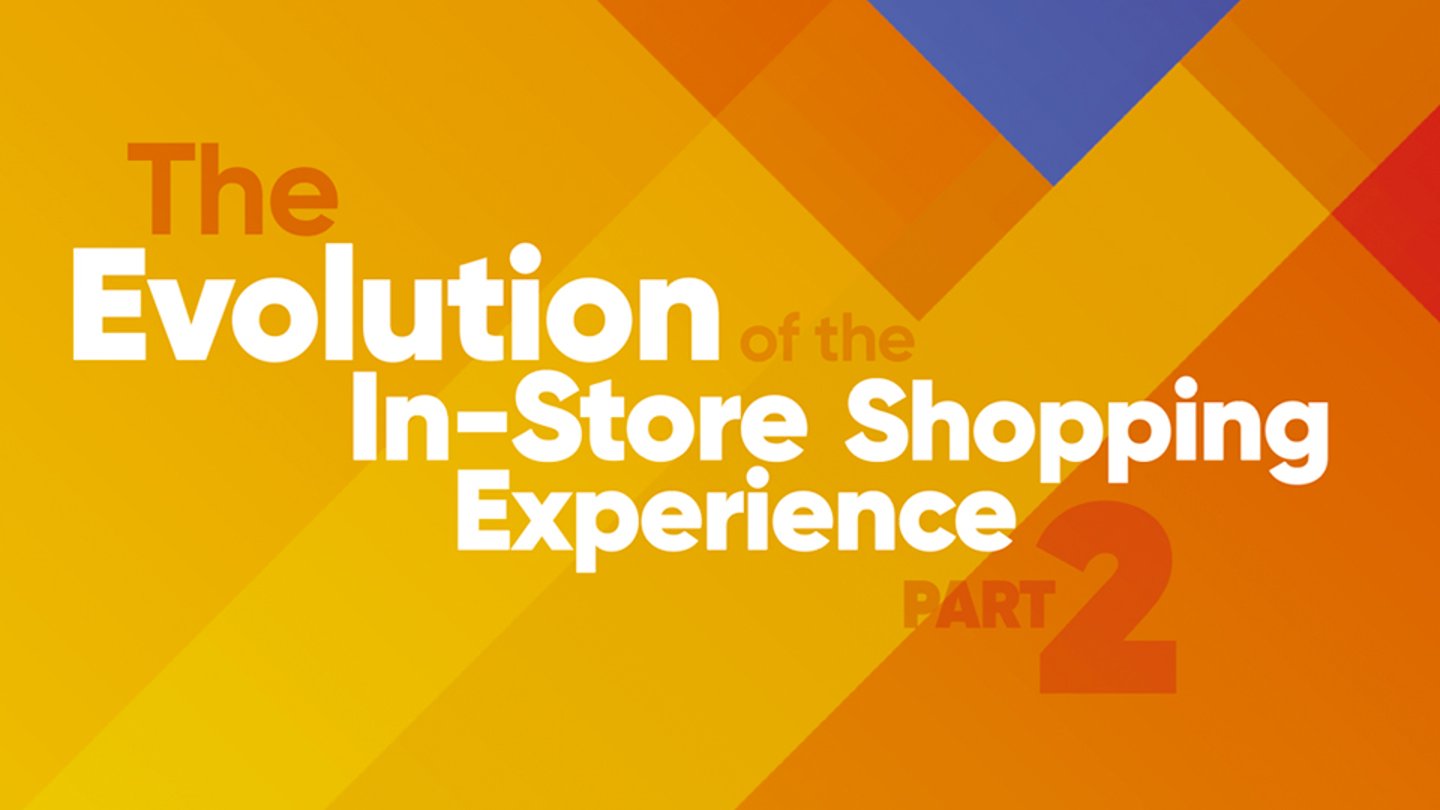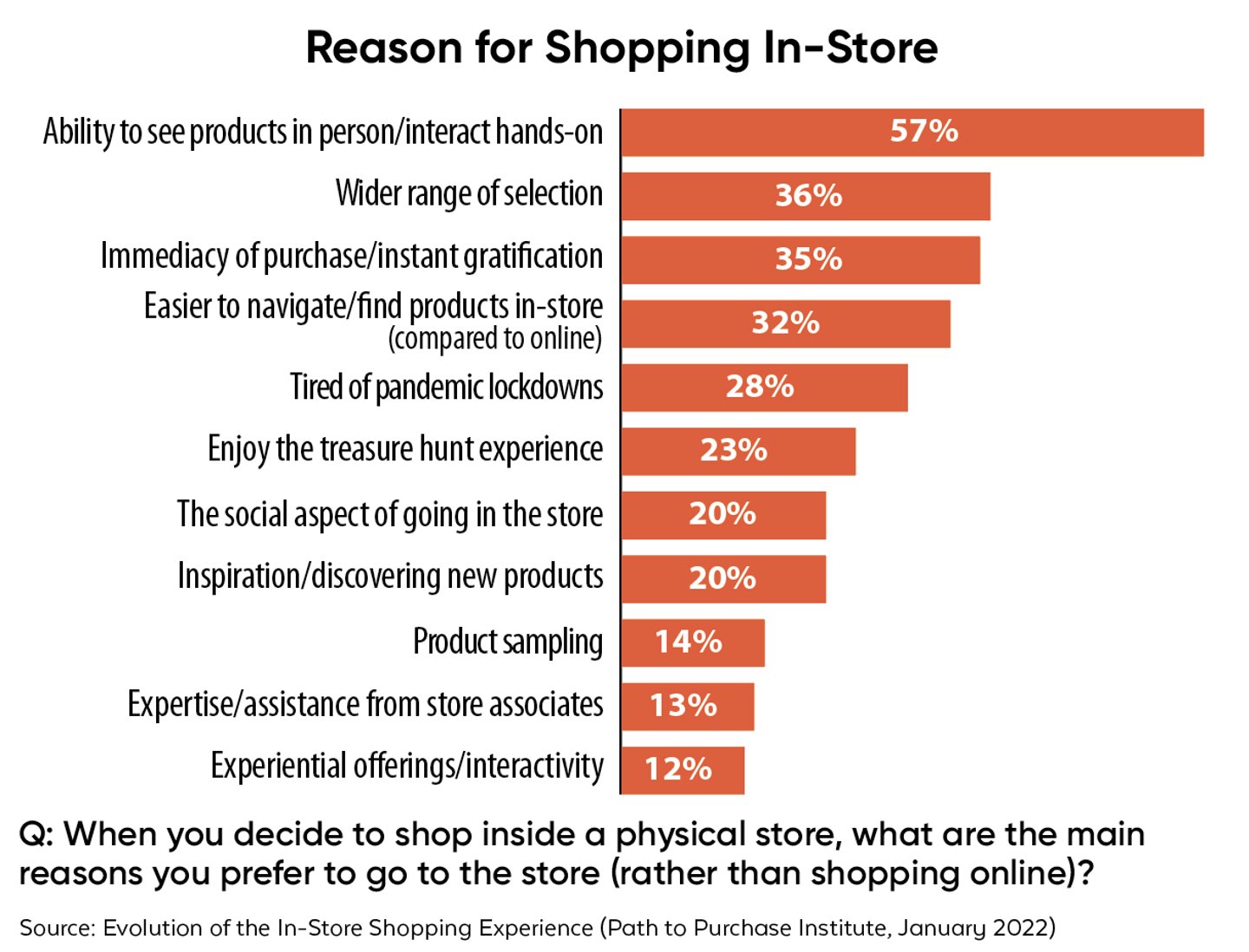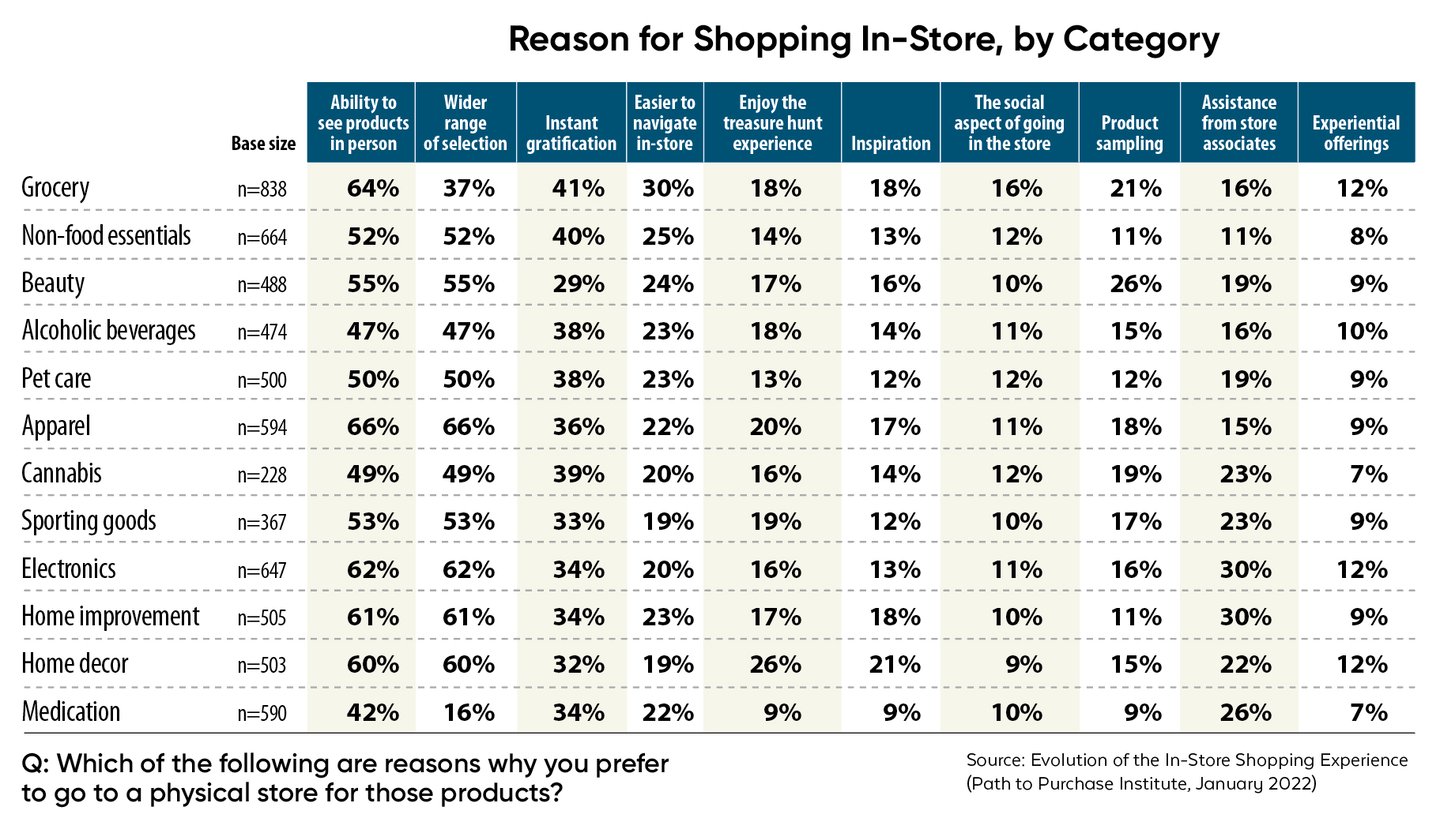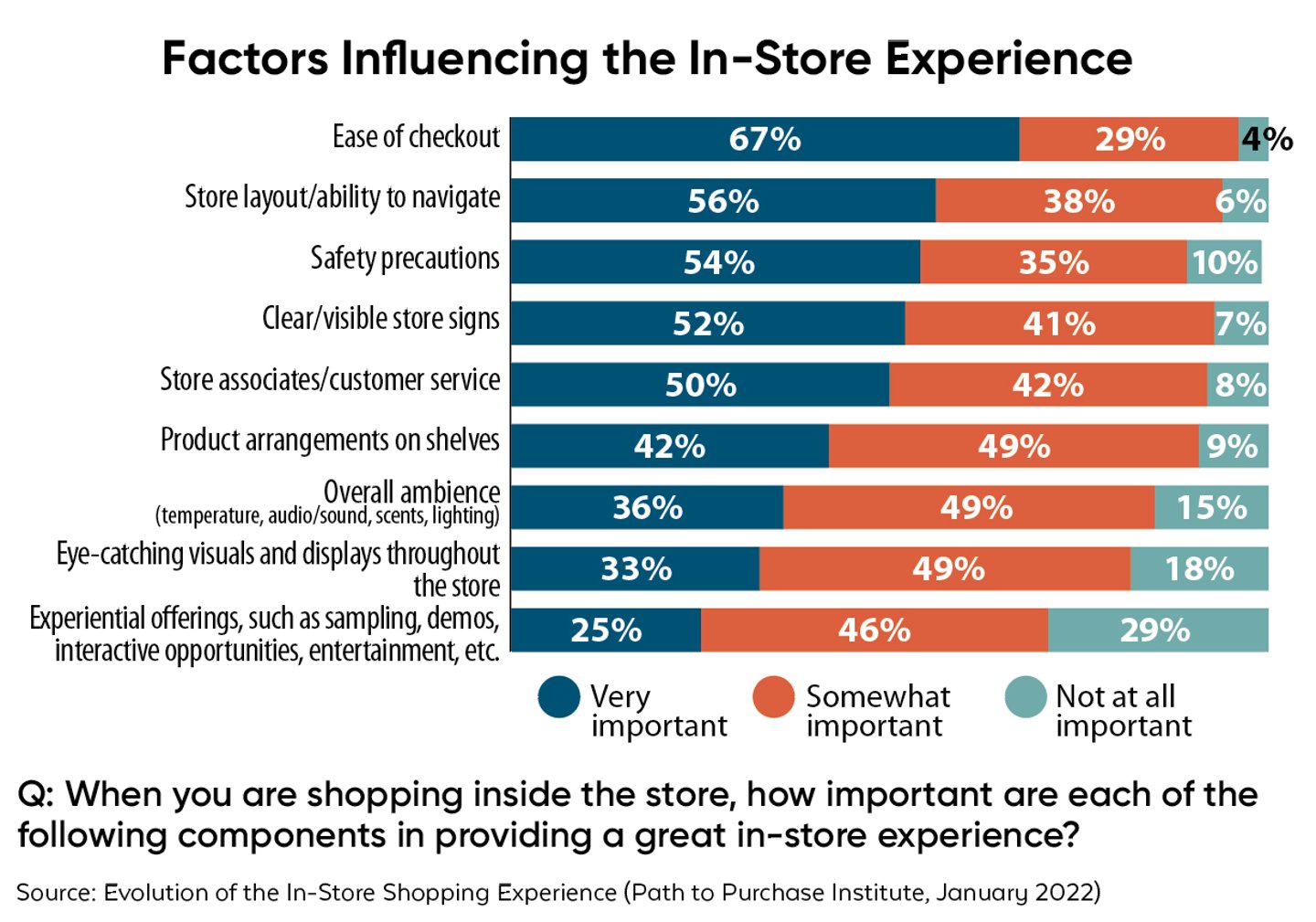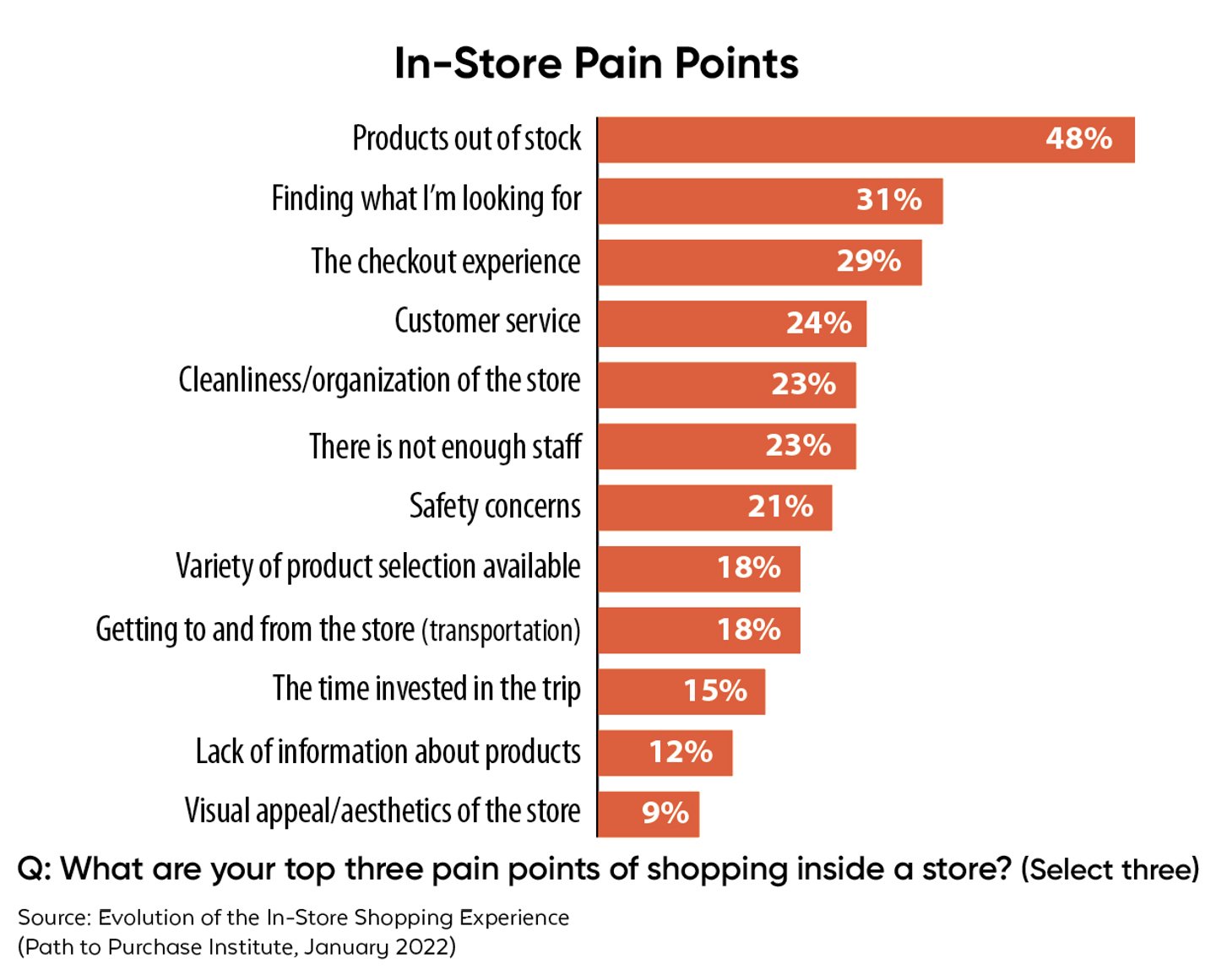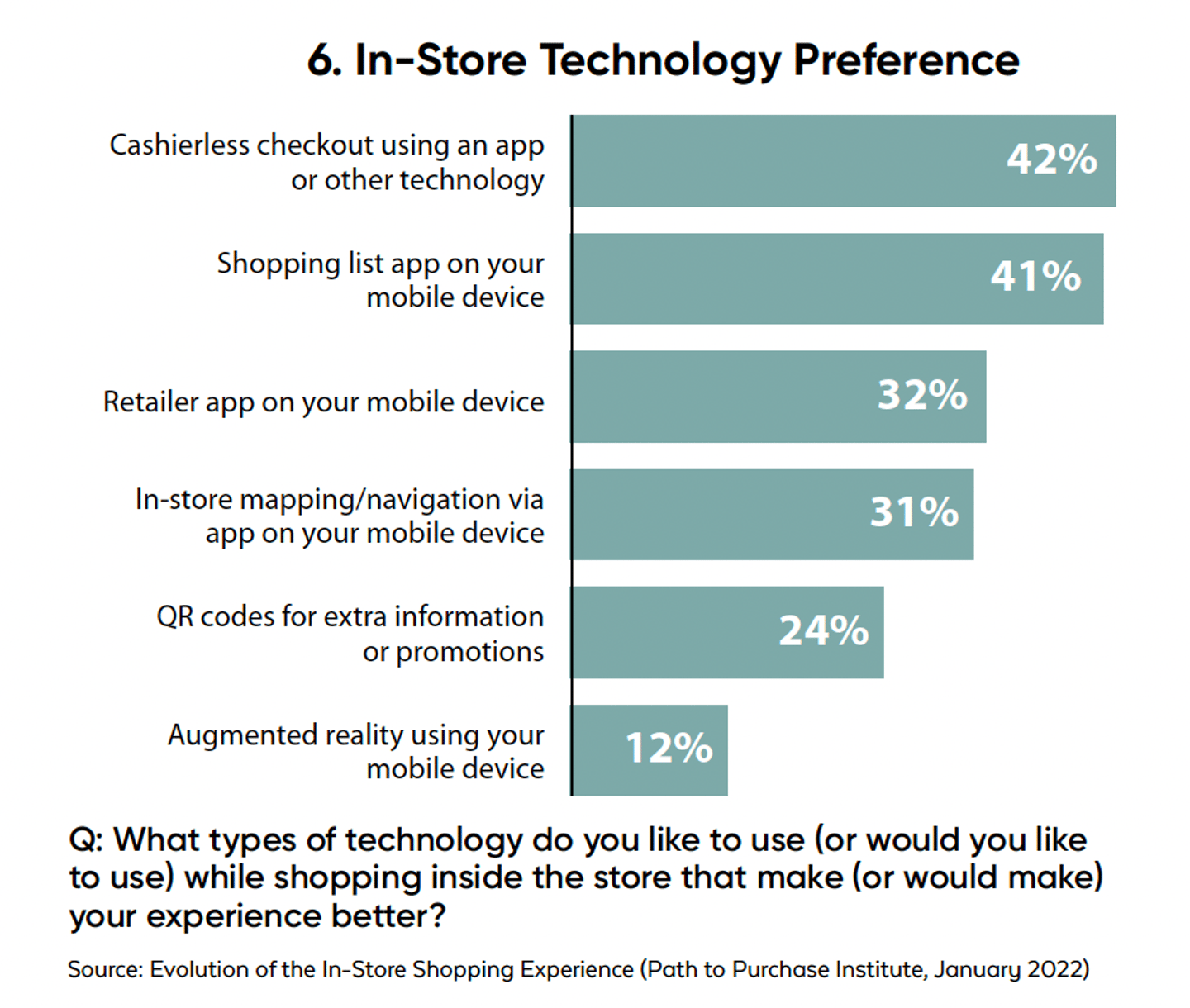The Evolution of the In-Store Shopping Experience, Part 2
(In cooperation with Great Northern Instore)
Despite clear shopper concerns about safety and cleanliness, efficiency, supply and demand issues, as well as customer service and social interactions, consumers are still shopping in physical stores. Part 1 of this special report on the Evolution of the In-Store Shopping Experience, which appeared in the March/April issue, focused on shopping frequency, changes in shopping habits and in-store vs. online shopping preferences. The data and feedback revealed challenges, yet clearly presents opportunities for brands and retailers to reenergize the in-store shopping experience.
In part 2 of the report, we share insights about why consumers are shopping in-store, what they are shopping for, what drives them to make spontaneous purchases, and the factors influencing their in-store experience. This additional data will help brands and retailers brainstorm shopping innovations — ways to engage consumers in the ever-evolving retail landscape, capture market share and bring joy back to shopping in-store.
In-Store Experience
As noted in part 1 of this special report, even as respondents were navigating the omicron variant at the time of this survey, 66% of respondents were still shopping in physical stores. For those who indicated they shop in-store, a primary motivator is the ability to see products in person. Consumers still have a desire to take a closer look at items and have hands-on interactions with merchandise.
Shoppers also feel there is access to a wider selection of products in-store and some commented on the feeling of instant gratification based on the immediacy of the purchase and walking out of the store with product in hand.
From apparel and groceries to electronics, home improvement and home decor, seeing products in person is a draw to physical stores across product categories as well as types of retailers. While seeing and handling merchandise brings consumers in-store to shop, there are a number of factors that influence their positive in-store shopping experience.
When shoppers were asked about factors influencing their in-store experience and the pain points of in-store shopping, ease of check-out rose to the top numerous times as a critical component of shopper satisfaction. This is reinforced by responses around technology, with respondents identifying cashierless checkout as a top technology for enhancing the in-store experience. Out-of-stock items and the inability to find products they are looking for were other leading pain points for in-store shoppers.
Brands and retailers face many operational challenges, especially due to staffing issues, yet the checkout process is an area that needs attention to ensure a satisfying in-store shopper experience. Some of the functional and fundamental aspects of store design and operations — store layout and ease of navigation, safety precautions, clean and visible signage and customer service — are all priorities for consumers right now. These have always been important aspects of the retail landscape, yet they emerged as hot buttons with COVID-19 and continue to be top of mind.
The current retail climate, influenced by COVID-19 stocking challenges and inflation rates, seems to have consumers focused on retailers that offer a good selection at a good price. This is evident with the naming of retailers such as Walmart and Target as favorites for in-store shopping experiences.
Factors for respondents who named Walmart as a favored retailer focused on variety, reasonable pricing, convenience and ease of navigation. The selection of Walmart reinforces the data shared in part 1 of this report about the behavioral shift in shopping habits and desire for one-stop-shopping. Typical comments about why Walmart is their favorite store to shop inside include:
- “Because I can find anything I need, and it’s convenient with low prices.”
- “It’s a one-stop-shop experience. I can get just about everything I need in one place. It makes shopping a lot easier.”
- “Because they have everything, and the prices are good and the environment is nice.”
Likewise, Target was cited for one-stop-shopping benefits as well as price, selection, store atmosphere and customer service:
- “Target has everything I need in one store, thus cutting my shopping time down each week.”
- “Target has many different types of items in one stop at reasonable prices.”
- “Target has most things you want/need with good prices. It’s usually a nice store too — clean, organized and well stocked.”
Dollar General, Dollar Tree and Costco were other frequently named retailers on the favorites lists due to a variety of selections and affordability.
- “Dollar General because there is a big variety of merchandise, and I can afford to shop there.”
- “Dollar General because they have so much to choose from at very low prices.”
- “Dollar Tree. It has good products at a good price.”
- “Dollar Tree because I can get almost everything I need at a reasonable price.”
- “Costco. They have high-quality grocery items at reasonable prices.”
- “Costco. Variety, price, convenience and quality.”
Some of the respondents’ reasons for shopping in-store center around the pre-pandemic joys of shopping. While some consumers are shopping in physical stores because they are tired of the pandemic lockdowns, others enjoy the treasure hunt experience or new product discovery as well as the social aspects. Furthermore, factors influencing in-store experience such as experiential offerings, eye-catching visuals and ambience, while ranking least important on the overall list, are still valued by a sizeable proportion of shoppers.
These responses provide brands and retailers with opportunities to enhance in-store engagement by improving the overall look and feel of stores and leveraging experiential moments and socialization. A respondent comment about Target as a favorite retailer reinforces these considerations: “Target, they have everything I need and a Starbucks inside, so I can walk around for a while and browse.”
Products Shoppers Dislike Shopping for In-Store
Respondents most frequently referenced clothing/shoes as well as food/groceries as frustrating in-store shopping categories.
Those who mentioned clothing and shoes say it is hard to find the right styles and sizes. “I dislike going into stores to look for new clothes because my size is rarely available, or the stores never have anything my style,” said one respondent.
Respondents noted grocery shopping tends to feel like a cumbersome chore, which is exasperated by high prices. “I just dislike shopping in general because prices on things are too high and it takes way too long, and I don’t feel like being around too many people,” said another respondent.
Consumers also find heavy or bulk items cumbersome to deal with when in-store shopping. Feminine hygiene and toilet paper were also referenced as shoppers feel it is embarrassing to purchase these items in-store. Crowded stores and long lines were other in-store shopping annoyances highlighted.
Favorite Retail Store to Shop Inside
With one-stop, efficient shopping considered as a top priority, Walmart tops the list as the favorite retailer for in-store shopping. Thirty-eight percent of respondents selected Walmart due to product variety, reasonable pricing, convenience, ease of navigation — a one-stop shop. Numerous respondents said, “I can get everything I need.”
Target followed at 10% with other one-stop-shopping and reasonable pricing references, as well as Dollar General, Dollar Tree and Costco.
Spontaneous Purchases
Retailers and brands are always exploring consumer behavior patterns and experimenting with how to tap into shopper impulses. How do you grab attention and influence a spontaneous purchase? How do you get a shopper to go off-list?
This report has emphasized the current one-stop-shopping mentality of consumers. While shoppers tend to be headed in-store with a purpose and a list, almost half of respondents admitted to making a spontaneous purchase most or all of the time. Exploring more sales and special offers is one way brands and retailers can capture shopper attention and entice off-list purchases. Fifty-one percent of respondents admitted a good deal drives their impulse buys.
Brands and retailers also need to further tap into shopper senses to encourage impulsiveness. Survey responses illustrate that visual stimulation still plays a role in spontaneous purchases. Eye-catching product packaging, endcap displays and shelf signage were referenced as influential factors.
Shopping in-store also allows consumers to visually come across products that remind them of a particular need, see something they forgot on their list or introduce them to new product offerings. Respondent comments also revealed cravings or shopping on an empty stomach influence spontaneous purchases.
Brands and retailers can experiment with different displays to capture attention or develop a strategy that offers a mix of display types from large displays at the front of the stores and temporary or seasonal displays to special signs hanging from the ceiling, aisle or walkway displays and endcaps. While all display types were ranked as generally effective, 46% of respondents indicated endcap displays were most effective in driving spontaneous purchases.
Conclusion
With staffing challenges, shifting COVID-19 policies and inflation, we are in the midst of a retail revolution. This report shows consumers are challenging brands and retailers to address safety and cleanliness, shopping efficiency, supply and demand issues as well as customer service and social interactions.
The good news is that consumers are still shopping in physical stores and there are opportunities to capture more market share in-store. Brands and retailers have an opportunity to address functional store design and operational elements, such as store layout and ease of navigation, safety precautions, clean and visible signage and customer service, to make shopping in-store feel safe and more efficient. Pairing this efficiency with enticing visuals, inspired experiential moments and engaging social interactions may be the answer to bringing the joy of shopping in-store back to consumers’ lives.
The reality is shopping habits are evolving daily and rapidly impacting the retail landscape. The brands and retailers poised to quickly adapt their in-store shopping experience are best positioned to evolve and succeed amidst the chaos.

